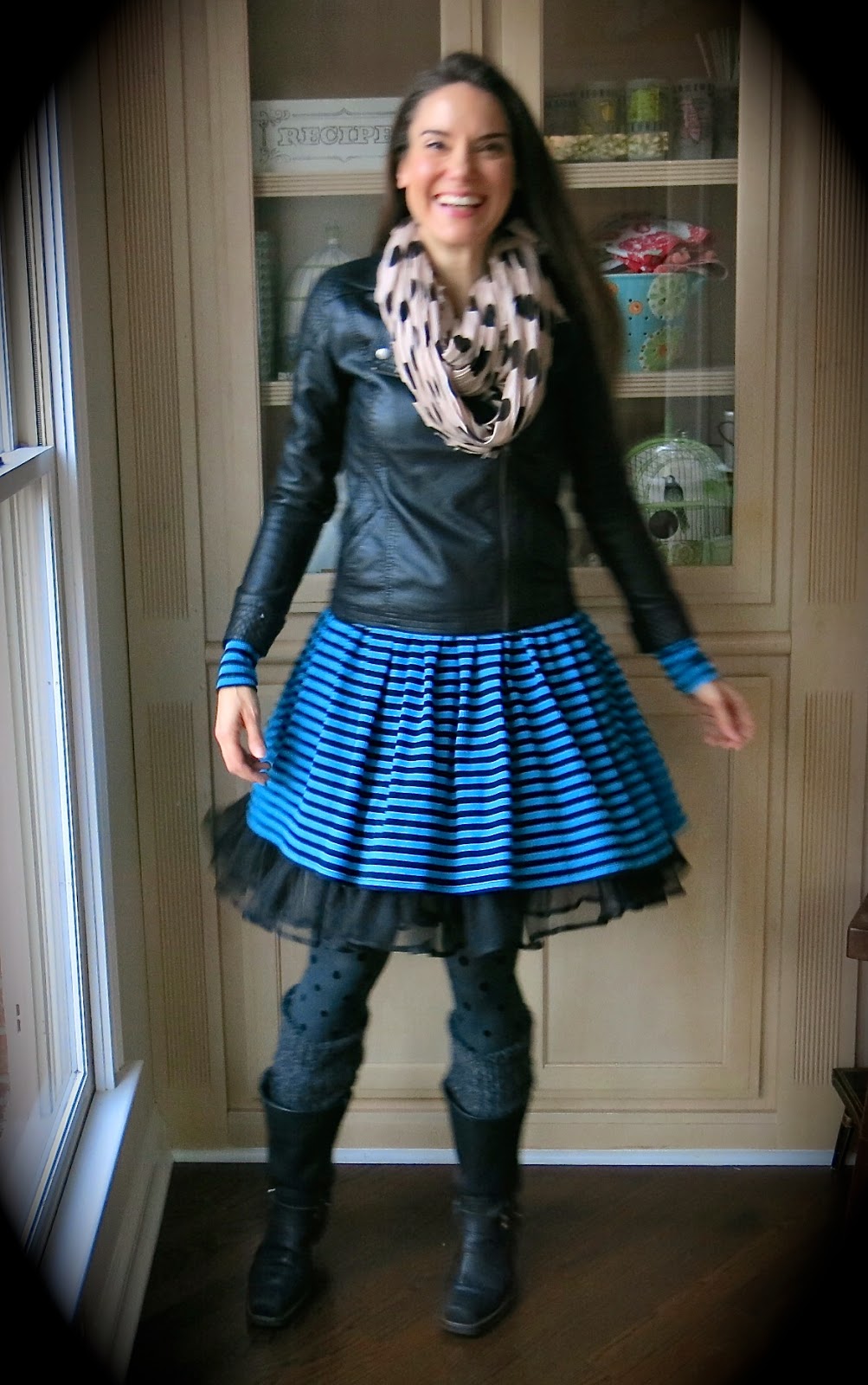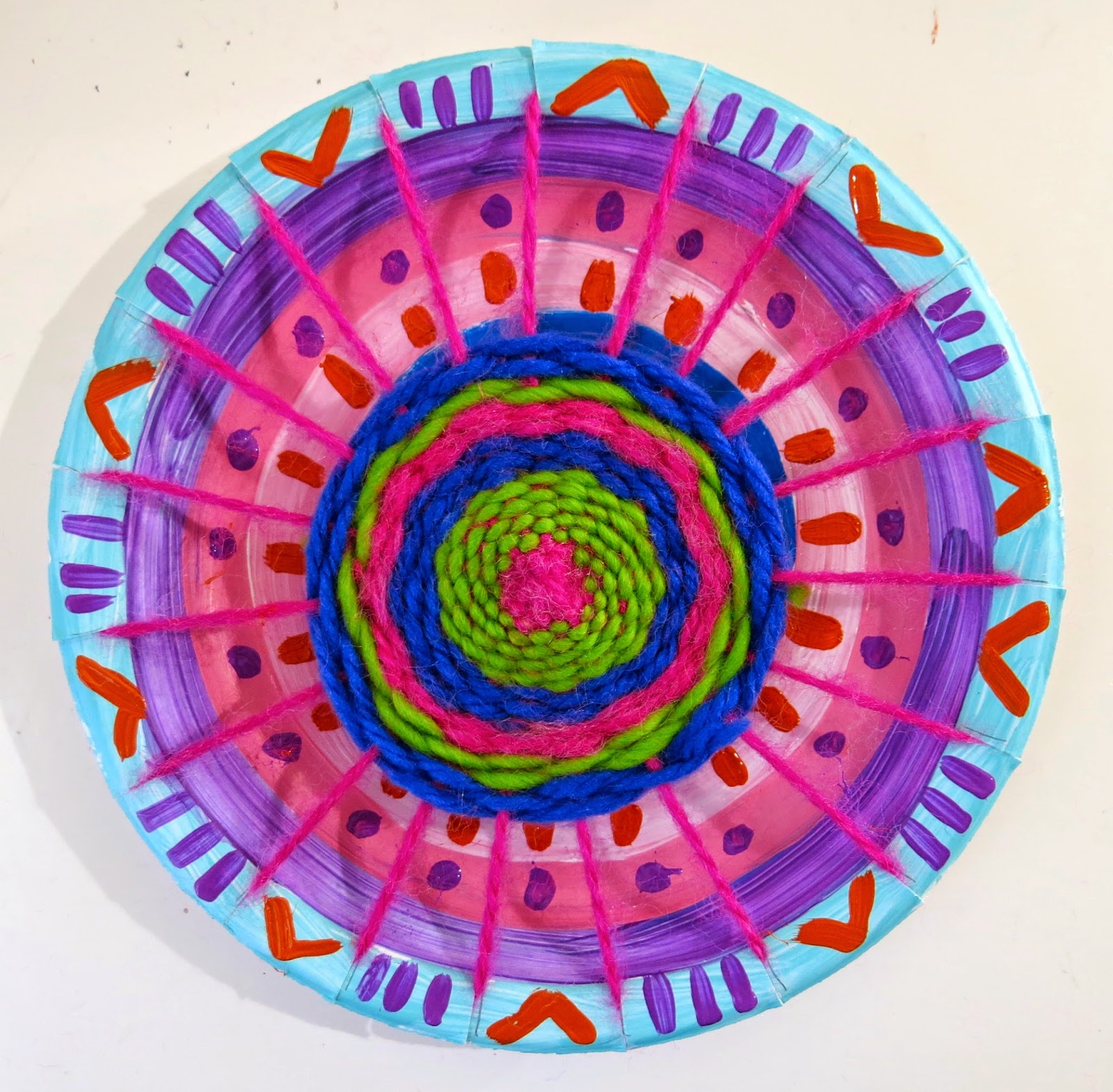Welcome Back, Monday: Oh, don't let the smile fool you. It was so hard returning to school this week! Two weeks of staying up late, catching up on shows, hiking, eating a nightly popcorn snack and sleeping in 'til 10am was just so hard to give up. Thankfully, Monday we didn't have kids which was a nice ease back into art teacherin' land. Keith Haring jacket: DIY here; dotted scarf: Old Navy, maybe?; Betsy Johnson Dress: found at Buffalo Exchange; dotted tights: dunno, Target?; leg warmers and crinoline: Amazon; Frye boots: lucky $39 score at Journey's years ago. I know, sometimes, I hit the lotto.
Well, howdy, kids! I hope everyone's return to the real world has been a good one. Mine had it's ups and downs to be honest. I'd have this great burst of energy in the morning but by midday, I was just spent. This coming week, my plan is to go to bed a lil earlier and start poppin the vitamin B like it's popcorn. What do y'all do when you hit that sluggish slump?
In other news, have I completely wore you out with all of my weaving posts? I sure do hope not as I've got more coming your way! Stay tuned this week for a simple weaving project for those early finishers and a project for your middle and high school kids. In the meantime, I thought I'd share my weaving prezi with y'all! I created one that showcases weaving from around the world. My students have really enjoyed it, I hope you and yours do as well.
Just click on this link and it'll take you right to the presentation! I'm working on another presentation of contemporary weavers to share with my students next week. I'll be certain to post it here so you can borrow it as well.
Now, let's talk Artsy Book Club! In case you didn't know, we'll be reading The Art Spirit by Robert Henri and I'd love for you to join the fun. Here's all I ask:
* Get your kitten mittens on this book! I found mine used very cheap on Amazon.
* Read the first 51 pages! This book doesn't have chapters like your average book. Instead, it's full of commentary from Henri given during talks, articles and fragments of letters. I noticed that page 51 seemed like a good place to press the pause button.
* Let's chat! I'll be sharing my thoughts (my apologies in advance) as well as posing questions here. Please do chime in, I'd love to hear from you!
So, are you in? I'd love to hear who is reading this classic with us. It seems like the perfect art teacher read, dontcha think?
A better glance at that Keith Haring jacket. You know, no one ever touts the benefits of pleather but I'm hear to tell you, a pleather jacket will keep you pretty warm, kids. It ain't gonna breathe at all so you will sweat your socks off but, by golly, you'll be warm!
Orange You Glad It's Tuesday?: Whilst teaching kindergarten on this particular day, I felt a little tickle on my leg. I looked down to see a sweet girl just barely touching my leg. "It's so orange!", she said when I looked at her. "Too much carrot juice," says me. "OH! I hate carrot juice!" was her reply. "Good thing." I'm so gonna get fired one o' these days. sweater: Urban Outfitters, old; skirt: vintage, thrifted; tights: Target; shoes: Dolls by Nina
Not Appropriate, Mrs. Stephens! Wednesday: I was informed by a fourth grader on this day that my attire was, "not appropriate, Mrs. Stephens! It's too cold out for tights!" I believe she was right, I nearly froze walking out to my car! blouse and sweater: vintage, thrifted; skirt: super old, JCrew
Two Hour Delay Thursday: Temps dipped so I enjoyed myself a couple extra hours of sleep. Which was great because I'd enjoyed myself a couple extra hours of stay-up time the night before. I watched the movie Gone Girl while attempting to knit. Have y'all seen that movie? I'd not even read the book so I walked in cold. It was so good! I think I only got about five rows knitted and dropped about 10 stitches in the process! dress: ModCloth, last year; brown fishnets: TJMaxx; yellow tights: Target
Welcome, Visitors! Friday: So I vaguely recall my principal mentioning that the superintendent, a handful of board members, my administrators and a state representative where gonna be in the school on Friday and would pop in the art room. And by "vaguely recall" I mean I totally forgot! I had my lovely first grade friends in the room who had just finished learning about Picasso's Blue and Rose periods and there thusly painting with cool and warm colors. The kids did great but I gotta tell you, I was a nervous wreck teaching in front of all those folk! Whilst wearing this craziness, of course. blouse and shoes: thrifted; sweater: old, For-never21; skirt: DIY, details here; tights: Target; belt: Amazon
Until Tuesday, y'all!










































































